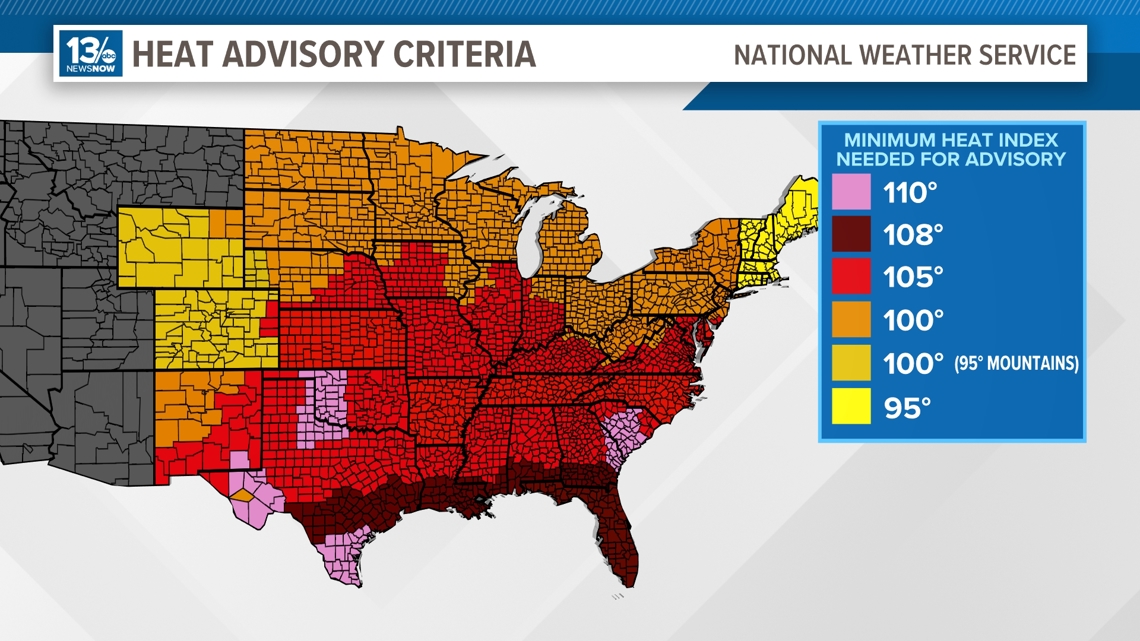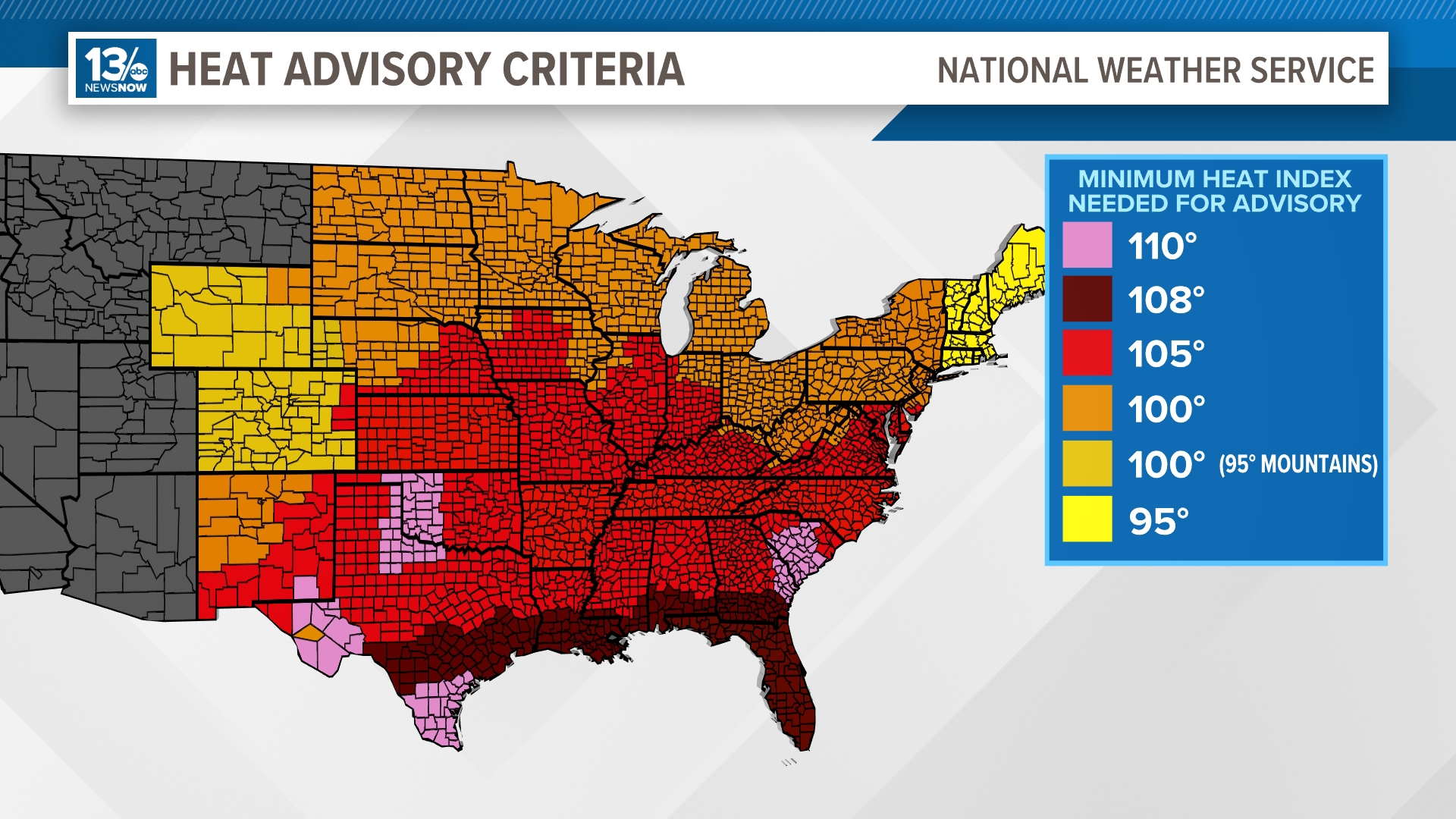NORFOLK, Va. — Hampton Roads is entering another heat wave, but keep in mind that a heat wave is different than normal, hot summer days.
According to the National Weather Service, a heat wave is defined as a period of abnormally and uncomfortably hot and unusually humid weather. By definition, a heat wave has to last at least two days.
When the heat index, or feels-like temperatures, gets hot enough, then the National Weather Service can issue heat alerts.
There are two types of heat alerts: a Heat Advisory or an Excessive Heat Warning. For a Heat Advisory to be issued for Hampton Roads, the feels-like temperature needs to climb to 105° or higher for at least three hours.
The criteria for an Excessive Heat Warning is even higher. For an Excessive Heat Warning to be issued, the feels-like temperature has to rise to at least 110° for at least three hours.
The kicker is the criteria for Heat Advisories and Excessive Heat Warnings change depending on where you live.


The further north you go, the lower the heat index has to be in order for a Heat Advisory to be issued. For example, in Boston, the feels-like temperature only has to be 95° for their local office to issue that alert.
When high heat is in the forecast and you plan to spend a long time outside, always make sure to drink plenty of water, take frequent breaks - especially if you can find some A.C. - and wear light-colored clothing.

